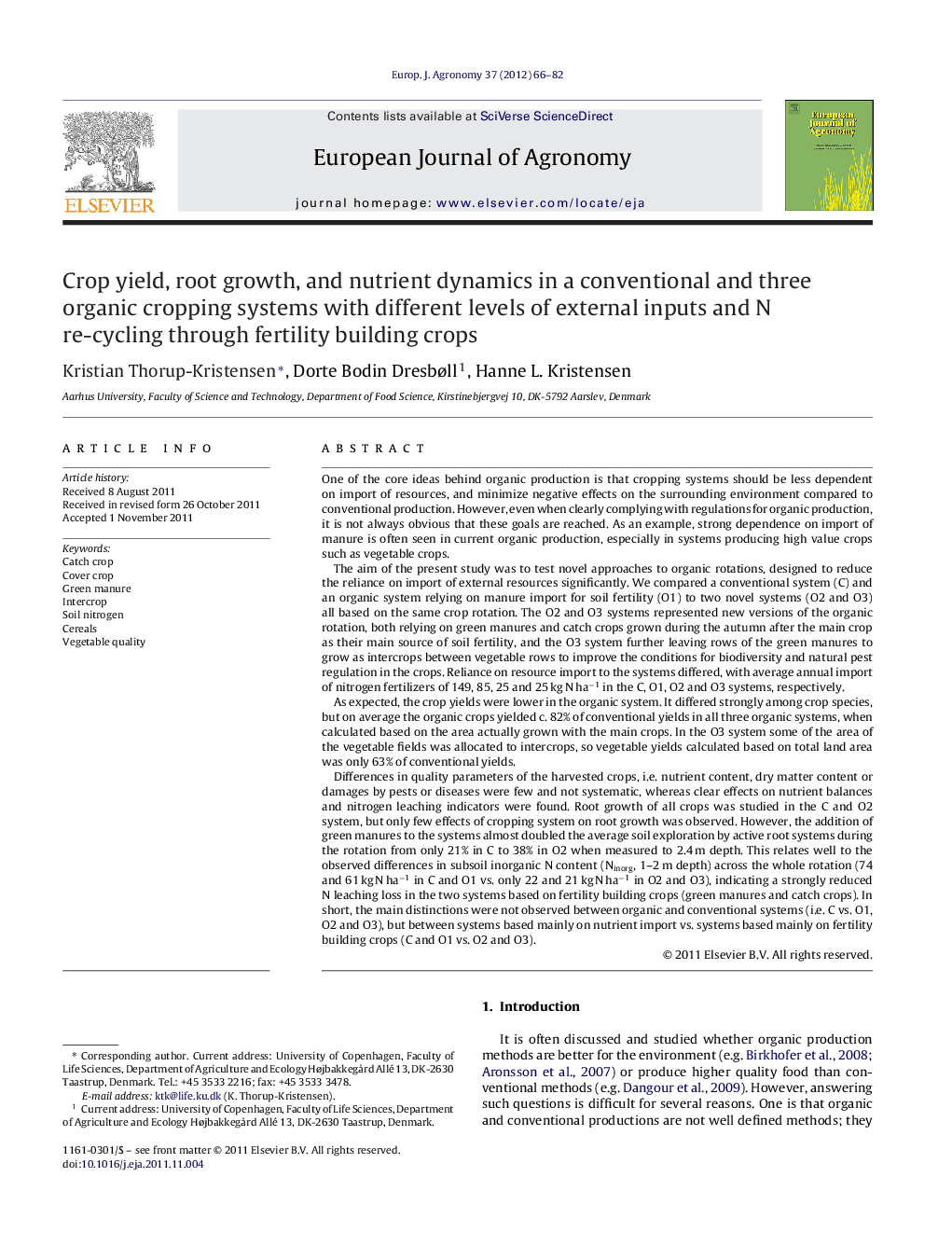| کد مقاله | کد نشریه | سال انتشار | مقاله انگلیسی | نسخه تمام متن |
|---|---|---|---|---|
| 4509185 | 1624489 | 2012 | 17 صفحه PDF | دانلود رایگان |

One of the core ideas behind organic production is that cropping systems should be less dependent on import of resources, and minimize negative effects on the surrounding environment compared to conventional production. However, even when clearly complying with regulations for organic production, it is not always obvious that these goals are reached. As an example, strong dependence on import of manure is often seen in current organic production, especially in systems producing high value crops such as vegetable crops.The aim of the present study was to test novel approaches to organic rotations, designed to reduce the reliance on import of external resources significantly. We compared a conventional system (C) and an organic system relying on manure import for soil fertility (O1) to two novel systems (O2 and O3) all based on the same crop rotation. The O2 and O3 systems represented new versions of the organic rotation, both relying on green manures and catch crops grown during the autumn after the main crop as their main source of soil fertility, and the O3 system further leaving rows of the green manures to grow as intercrops between vegetable rows to improve the conditions for biodiversity and natural pest regulation in the crops. Reliance on resource import to the systems differed, with average annual import of nitrogen fertilizers of 149, 85, 25 and 25 kg N ha−1 in the C, O1, O2 and O3 systems, respectively.As expected, the crop yields were lower in the organic system. It differed strongly among crop species, but on average the organic crops yielded c. 82% of conventional yields in all three organic systems, when calculated based on the area actually grown with the main crops. In the O3 system some of the area of the vegetable fields was allocated to intercrops, so vegetable yields calculated based on total land area was only 63% of conventional yields.Differences in quality parameters of the harvested crops, i.e. nutrient content, dry matter content or damages by pests or diseases were few and not systematic, whereas clear effects on nutrient balances and nitrogen leaching indicators were found. Root growth of all crops was studied in the C and O2 system, but only few effects of cropping system on root growth was observed. However, the addition of green manures to the systems almost doubled the average soil exploration by active root systems during the rotation from only 21% in C to 38% in O2 when measured to 2.4 m depth. This relates well to the observed differences in subsoil inorganic N content (Ninorg, 1–2 m depth) across the whole rotation (74 and 61 kg N ha−1 in C and O1 vs. only 22 and 21 kg N ha−1 in O2 and O3), indicating a strongly reduced N leaching loss in the two systems based on fertility building crops (green manures and catch crops). In short, the main distinctions were not observed between organic and conventional systems (i.e. C vs. O1, O2 and O3), but between systems based mainly on nutrient import vs. systems based mainly on fertility building crops (C and O1 vs. O2 and O3).
► Yield loss in organic vs. conventional systems was on average less than 20%.
► Pest and disease damage was not systematically different among the 4 systems.
► Fertility building crops improved nutrient management, reducing environmental nitrogen losses.
► Adding fertility building crops in the rotation almost doubled root exploitation of the soil.
► Main difference in N dynamics was between systems with or without fertility building crops.
Journal: European Journal of Agronomy - Volume 37, Issue 1, February 2012, Pages 66–82